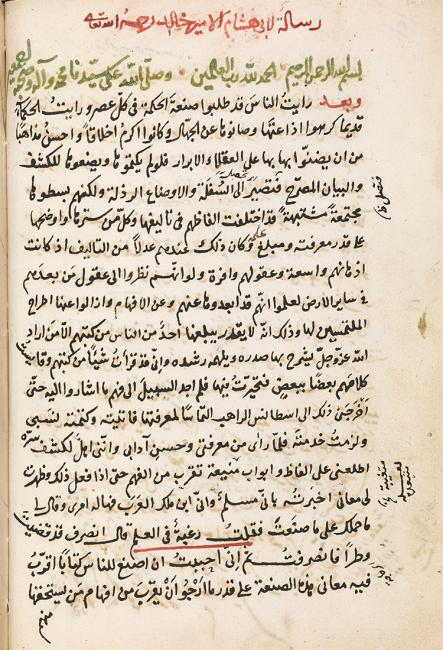Overview
The sciences studied and practised in the Islamic world during its so-called Golden Age (c. 750–1258) and beyond were numerous and varied. When and where did they originate? Scientific research and development, like all scholarly pursuits, is built upon the work of earlier researchers.
Scientific progress can be seen as a number of traditions or chains, the links of which are the works of a scientist or group of scientists. These links are inherited, studied, analysed and debated by the scientists who form subsequent links in the chain. The mediaeval Islamic world was extremely multicultural, so it is not surprising that the chains of the sciences practiced in these societies originate in Greek, Persian, Syriac and Indian culture, as well as in Arabic-speaking communities.

The Expansion of Islam
With the expansion of Islam out of Arabia in the early seventh century AD the Arabs quickly conquered and unified lands from Egypt to India for the first time since the reign of Alexander the Great (d. 323 BC), eventually surpassing Alexander’s empire to include the rest of North Africa and Spain.
The traditional barrier between east and west and the border, at the Tigris and Euphrates rivers, between the Roman or Byzantine lands and the Persian Empire had been removed. The lands on both sides now formed a political unity where economic and cultural exchange could flourish.
A Multilingual Empire
Translation into Arabic was a key ingredient that held this new empire together and helped it function. In the lands that had belonged to the Byzantines (Syria, Palestine and Egypt), the administrative apparatus (dīwān) used under the Umayyad caliphs at Damascus was translated from Greek into Arabic sometime at the end of the seventh century or first half of the eighth century AD. Around the same time, similar projects were carried out in the lands that had belonged to the Persians ( Eastern Anatolia South-east Turkey today. , present-day Iran and Central Asia), where the translations were made from Pahlavi (Middle Persian, not written in Arabic script) into Arabic.
The First Translations
Translations of books of literature and history from Greek and Pahlavi into Arabic were also made, and since Pahlavi literature contained translations of Sanskrit literature, Arabic readers were exposed to this too. There is some evidence that the first literary translations (i.e. translations of books as opposed to legal and administrative documents) into Arabic were commissioned by the Umayyad prince Khālid ibn Yazīd (d. after 704 AD). These were predominantly Greek scientific texts, notably on chemistry and astronomy.

Around the same time, it is claimed that a large medical text, the Compendium (Kunnāsh) of Ahrun was translated from Syriac to Arabic. The systematic translation of scientific literature into Arabic on a large scale does not seem to have taken place until some fifty years later under the ʿAbbāsid dynasty, whose capital was at Baghdad.
Whenever this period of translation really began, by around the end of the tenth century almost all Greek scientific and philosophical texts available had been translated into Arabic, as well as a large number of Syriac, Persian and translations of Sanskrit texts. This period continued into the subsequent centuries.







